Atlantic Monthly Contributors's Blog, page 148
June 7, 2016
A Cheating Scandal at Ohio State University

One of the top veterinary schools in the United States is now embroiled in a cheating conspiracy that could lead to the dismissal of 85 students.
In February, officials at the Ohio State University College of Veterinary Medicine, which is ranked fifth in the country by U.S. News and World Report, investigated allegations that students were sharing answers for online take-home tests. Officials were able to determine whether students had collaborated on the online exams by looking at patterns of right and wrong answers, and looked to see how long it took them to complete the exams. Because of federal student-privacy laws, university officials would not disclose which classes were involved or the specific punishments.
As The Columbus Dispatch reports, collaboration on take-home online exams has been an issue that’s plagued academia in recent years.
Last year, the university punished 24 students in the College of Food, Agriculture and Environmental Sciences after finding that one student completed online coursework for the other 23 in exchange for payment. In the 2014-15 school year, the university found a total of 501 undergraduate and graduate students in violation of academic-conduct rules, up from 457 the previous year. Those numbers do not include professional students such as those in the veterinary program.
Sharing answers on take-home tests has become a familiar source of large-scale scandal. In 2012, Harvard University announced that it was investigating 125 students accused of working together on such a test. The incident raised questions about whether a current academic and business-world emphasis on collaboration and working in teams has blurred students’ understanding of what constitutes cheating.
Punishment for this sort of academic cheating ranges from a warning to dismissal from the 650-pupil program. Some of the Ohio State students are appealing the punishment to the university provost’s office.

Could This Be California's Worst Wildfire Season?
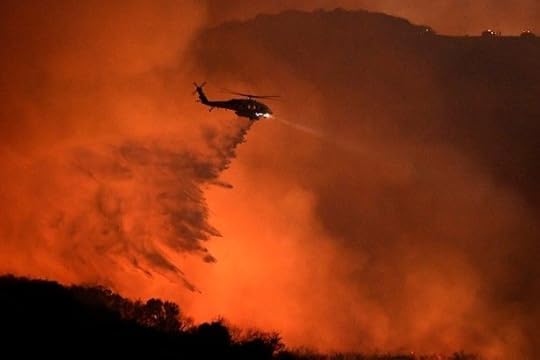
Five years of drought have dried up California’s forests and the first six months of this year has seen twice as many acres burned as the same time in 2015, the Los Angeles Times reported.
By Monday, about 400 firefighters working on the ground and in helicopters had extinguished one blaze in Calabasas, a neighborhood on the edge of Los Angeles. On Tuesday at least two other large fires in the state burned, as the Times reported:
In the north, crews tackled the 3,200-acre Coleman fire as it tore through Los Padres National Forest, threatening several homes. Farther south in Calabasas, residents left their homes as flames consumed more than 500 acres. Fast-approaching flames forced a bride, groom and their guests to act quickly and move their entire wedding at the Inn of the Seventh Ray in Topanga Canyon to a nearby beach.
Already this year, more than 1,500 fires have burned 28,000 acres. In the same period last year, fewer than 11,500 acres had been scorched.
Part of the reason for this may be that more trees have died with the consecutive years of drought. Atop that, this winter and spring saw above-average rainfall compared with recent years, especially in Central California. It wasn’t enough to subside the drought, but it contributed to grass growth, which is a quick source of fuel for fires.

A Boy Goes Home After 6 Nights Alone in the Forest
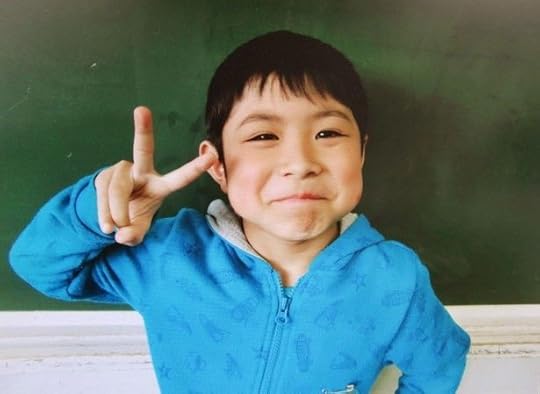
The 7-year-old Japanese boy whose parents left him on a mountain road as punishment and who was found last week after a massive six-day search, left the hospital Tuesday and returned home with his mother and father.
The boy, Yamato Tanooka, started a national conversation in Japan about child discipline, and outraged the public. His parents at first told police the boy had become lost on a family outing in Shikabe, on the island of Hokkaido. But they later confessed they’d left him alone on a mountain road as punishment for throwing stones at people and cars. When they returned 30 minutes later, they said, he was gone.
Yamato was found nearly a week later about three miles from where he was last seen on May 28. He left the Hakodate municipal hospital Tuesday, wearing a baseball cap and smiling. His father said the boy has already accepted his apology, as The Japan Times reported:
The father previously apologized for what he admitted were his “excessive” actions in punishing the boy and said Monday that his son has forgiven him.
“I said to him: ‘Dad made you go through such a hard time. I am sorry,’ ” the elder Tanooka told TBS TV in footage aired Monday.
“And then my son said, ‘You are a good dad. I forgive you,’ ” Tanooka added, choking up.
After rescue workers and soldiers searched the forest for days, they found the boy suffering from mild dehydration. When asked about the ordeal, the boy said he had found a hut to spend the nights in, where he slept between two mattresses to keep warm. He drank water, but found nothing to eat. The parents were not charged with any crime.

The Murder of a Bangladeshi Hindu Priest
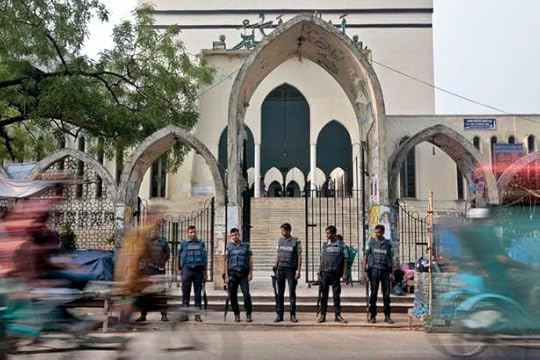
A Hindu priest, on his way to offer prayers at his local temple in western Bangladesh, was killed by suspected Islamists earlier this week.
Police found Ananda Gopal Ganguly, a 70-year-old from the Jhenaidah district, in a rice field with his head nearly severed from his neck. He is the third person killed by suspected Islamists in the country in two days. On Sunday, a Christian businessman and the wife of one of the lead police officers investigating Islamist attacks were killed.
While officials in the predominantly Muslim country continue to deny that ISIS or its sympathizers are operating there, Bangladeshi police have cracked down on several Islamists tied to other attacks. This week, police killed three suspected extremists, as the BBC reports:
Two alleged members of the banned Jamaat-ul-Mujahideen Bangladesh (JMB) were shot dead in Dhaka when police raided a home in the city—police said unidentified gunmen opened fire on them.
A third—said to have been linked to a recent bombing of an Ahmadiya mosque—was killed in western Rashahi district.
Bangladesh has seen an increased amount of violence tied to Islamists this year. Since January 2015, 40 religious minorities and secularists have been killed by extremists, police say. Meanwhile, the South Asian country continues to prosecute, and sometime execute, leaders tied to the largest Islamist party, Jamaat-e-Islami.

Hollywood Franchises and Indie Surprises: A Summer Movie Preview
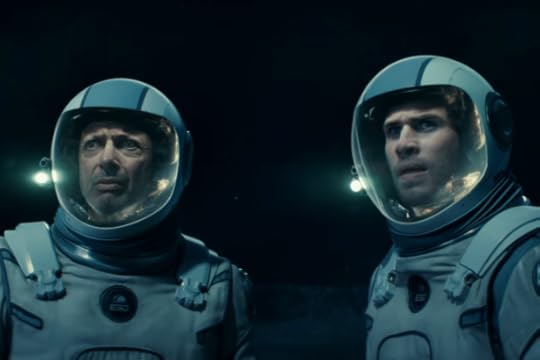
If the words “summer movie season” have become synonymous with Hollywood’s shoddiest products—cruddy sequels, head-scratching reboots, and seemingly never-ending franchises—then the upcoming 2016 slate should test the limits of poor quality. Anything, it seems, can inspire a blockbuster, from video games to magic tricks to puns on the word “Johnson.” There’s even a horror film whose entire premise hinges on the lights being turned off. But there’s some hope to be found in the world of independent film, which along with the better-pedigreed large-scale fare could help buoy an otherwise dire-looking season.
Alas, things will get worse before they get better. This week’s releases include Warcraft (June 10), a major adaptation of a colossally popular video-game series from the promising director Duncan Jones (Moon, Source Code). The critics are weighing in, and things don’t look good—David Ehrlich of Indiewire called it “The Battlefield Earth of the 21st Century,” which probably won’t make it on the poster. Even though it’s a video-game film, Warcraft is actually one of only two action epics being offered up this summer that aren’t remakes or followups. The other is Central Intelligence (June 17), a spy comedy starring Kevin Hart and Dwayne “The Rock” Johnson that’s centered its advertising on Hart’s short stature and a CGI gag that turns Johnson into a fat teenager for flashback sequences.
Do you like sequels? Then you’re in luck. Everyone’s favorite bank-robbing magicians are back for Now You See Me 2 (June 10), with Daniel Radcliffe and Lizzy Caplan now in tow (it remains an infuriating oversight that the film wasn’t titled Now You Don’t). Pixar is playing it safe this year with Finding Dory (June 17), which goes back to the ocean for an adventure centered on its titular absent-minded fish (Ellen DeGeneres). Then, alien invaders return for Independence Day: Resurgence (June 24), coming 20 years after the original rewrote the rules of modern blockbuster advertising. Will Smith isn’t around, but Jeff Goldblum and Bill Pullman will try to pick up the slack alongside a young new cast.

Star Trek Beyond/Paramount
In Star Trek Beyond (July 22), the Enterprise tries to recover from the depressed critical reception to Star Trek Into Darkness by injecting a little fun back into the franchise, with Captain Kirk tearing around an alien planet on a motorcycle. In Suicide Squad (August 5), the DC Comics cinematic universe will try a similar soft reboot with a tale of villains and antiheroes that’s going for a lighter tone than Batman v Superman. Just in case you forgot about him, Matt Damon’s Jason Bourne (July 29) is also coming back to remember more things about his dark past, though his love for hand-to-hand combat might seem hopelessly outdated in the CGI-laden film world he’s returning to.
Perhaps remakes are more your speed—in an era where every week brings at least two mega-costly tentpole films, studios love to tap recognizable brand names as much as possible. Two feel like particularly hoary throwbacks: The Legend of Tarzan (July 1), which features Alexander Skarsgard’s chiseled chest but nothing particularly innovative; and Ben-Hur (August 19), from the Abraham Lincoln: Vampire Hunter director Timur Bekmambetov, which probably won’t win the 11 Oscars its namesake grabbed in 1959. The more radical approach to remaking Ghostbusters (July 15), with an all-female cast, has prompted sexist outcry on some corners of the internet, but at least dares to do something different.

Swiss Army Man/A24
As Hollywood proffers up more large-scale projects to the detriment of the mid-sized studio picture that used to make up the backbone of the film industry, the indie film world has rushed to fill that void. The Sundance hit Swiss Army Man (June 24) has a strange premise to say the least: A man (Paul Dano) finds a dead body (Daniel Radcliffe) while stranded on an island, and uses its supernatural powers (including an impressive farting ability) to escape. Judging from its advertising and critical praise, it has to be seen to be believed.
Weiner-Dog (July 1) is a new film from the provocateur Todd Solondz, a loose follow-up of sorts to his cult classic Welcome to the Dollhouse starring Greta Gerwig and Julie Delpy. Captain Fantastic (July 8) offers a meaty role for Viggo Mortensen as an obsessive father of six children who deals with the culture shock of moving from a reclusive paradise to the real world. Café Society (July 15) looks like an airy period comedy set in ’30s Hollywood, but should attract more attention for the offscreen criticism of its director Woody Allen. Though he still attracts major actors like Jesse Eisenberg and Kristen Stewart, Allen is no longer the dominant face of independent American film he once was.

Don’t Think Twice/The Film Arcade
Don’t Think Twice (July 22), a smart, winsome comedy set in the vicious world of improv, is a worthy follow-up to Sleepwalk With Me by the director and stand-up comic extraordinaire Mike Birbiglia. Absolutely Fabulous (July 22) is a long-awaited film adaptation of the cult British sitcom with a fantastic log line: Patsy (Joanna Lumley) and Edina (Jennifer Saunders) find themselves at the center of a media firestorm when they accidentally kill Kate Moss. There’s even an offbeat animated entry: The R-rated Sausage Party (August 11), in which Seth Rogen, Kristen Wiig, Jonah Hill and others voice a bunch of foul-mouthed supermarket products who make a break for freedom.
There are some major Hollywood efforts to root for. Steven Spielberg’s The BFG (July 1) will bring Roald Dahl’s classic tale to the big screen with the help of cutting-edge technology. The film uses motion-capture effects to turn the Oscar-winner Mark Rylance into the Big Friendly Giant and was well-received at the Cannes Film Festival. The Secret Life of Pets (July 8) is an animated tale of talking cats and dogs that from the studio that brought us Minions, and could well be the family hit of the summer. Free State of Jones (June 24), from the Hunger Games director Gary Ross, dramatizes the life of the Civil War rebel Newton Knight (Matthew McConaughey), who rose up against the Confederacy in Mississippi. The Founder (August 5) is a biopic about a fascinatingly flawed man—Ray Kroc (Michael Keaton), who franchised the family burger joint McDonalds into the fast-food chain we recognize today—that will hopefully dig into some of his darker business practices. The film will also signal the start of a different Hollywood glut: As summer winds down and turns into Oscar season, a whole new year of studio pandering will begin.

June 6, 2016
Telling the Story of the Stanford Rape Case

In the days after a 20-year-old former Stanford University student received his jail sentence for sexually assaulting an unconscious woman on the school’s campus, two letters related to the case and made public have been widely read: one by the victim, and one by the offender’s father.
The victim’s letter was published in full by BuzzFeed on Friday, a day after the 23-year-old woman, who has chosen to stay anonymous, read it aloud to Brock Allen Turner during his sentencing hearing. In the 7,244 word-letter, the woman provides a harrowing, detailed account of her attempted rape in January 2015 and the struggle of trying to survive it. At times, she directly addresses Turner, telling him how that night destroyed her life.
The letter was praised for its “powerful” message that encouraged sexual-assault victims to seek justice against their attackers. It also immediately sparked outrage on social media and elsewhere because of the sentence Turner received for the crimes it described: six months in county jail and three years of probation. Turner faced up to 14 years in state prison when he was convicted last month of three felonies—assault with intent to commit rape of an intoxicated woman, sexually penetrating an intoxicated person with a foreign object, and sexually penetrating an unconscious person with a foreign object—and prosecutors had asked for six years. But the judge had ordered much less, saying a harsher sentence would have a “severe impact” on Turner, a star swimmer who could have made it to the Olympics.
Then on Sunday, a letter written by Dan Turner, Brock’s father, was made public. In the note, which he read during the sentencing hearing, the elder Turner pleads with the judge for leniency for his son, explaining how that night had destroyed his life.
The note quickly prompted public outcry, too. The words have been described as “despicable” and “impossibly offensive.” Dan Turner is being pilloried for saying his son wants to educate other college-age students “about the dangers of alcohol consumption and sexual promiscuity” and for not acknowledging he committed a crime, instead boiling down what happened to “20 minutes of action.”
The two letters have thrust the California case to the forefront of a national conversation about sexual-assault, rape culture on college campuses, and racial disparities in sentencing laws for sex crimes. Sexual-assault advocates say the Stanford case shows why so many victims do not report their assaults to police or choose to testify in drawn-out trials that could end in sentences that, in this woman’s case, are widely considered a slap on the wrist. Read side by side, they seem to describe two entirely different worlds. In one, the punishment doesn’t fit the crime; in the other, there wasn’t a crime to begin with.
On January 18, 2015, at about 1 a.m., two male Stanford graduate students were riding their bikes through campus when they spotted a man on top of a woman near a dumpster. The woman did not appear to be moving. The students approached the man, who fled, leaving the woman, unconscious and partially naked, on the ground. One of the students chased him and held him down while the police was called. The man was identified as Brock Turner.
Turner and the woman had attended the same party that night and were intoxicated; Turner’s blood-alcohol level was double the legal limit at the time, and the woman’s was three times the legal limit. Turner admitted to engaging in sexual contact with the woman, but said she had given consent. The victim testified that she had no memory of the assault, and in her statement last week said she loses sleep “when I think about the way it could have gone if the two guys had never come.”
Like his father, Brock’s lawyers portrayed the white, blond-haired, blue-eyed student to the jury as a talented athlete with a bright future ahead of him. The headlines following his case described him as an “All-American swimmer” and the victim, as she recalled in her letter, as an “unconscious intoxicated woman, ten syllables, and nothing more than that.”
She wrote:
For a while, I believed that that was all I was. I had to force myself to relearn my real name, my identity. To relearn that this is not all that I am. That I am not just a drunk victim at a frat party found behind a dumpster, while you are the All American swimmer at a top university, innocent until proven guilty, with so much at stake. I am a human being who has been irreversibly hurt, my life was put on hold for over a year, waiting to figure out if I was worth something.
My independence, natural joy, gentleness, and steady lifestyle I had been enjoying became distorted beyond recognition. I became closed off, angry, self deprecating, tired, irritable, empty. The isolation at times was unbearable. You cannot give me back the life I had before that night either. While you worry about your shattered reputation, I refrigerated spoons every night so when I woke up, and my eyes were puffy from crying, I would hold the spoons to my eyes to lessen the swelling so that I could see.
In his letter, Dan Brock wrote the verdict had “broken” and “shattered” his son:
He will never be his happy go lucky self with that easy going personality and welcoming smile. His every waking minute is consumed with worry, anxiety, fear, and depression. You can see this in his face, the way he walks, his weakened voice, his lack of appetite. Brock always enjoyed certain types of food and is a very good cook himself. … Now he barely consumes any food and eats only to exist. These verdicts have broken and shattered him and our family in so many ways. His life will never be the one that he dreamed about and worked so hard to achieve. That is a steep price to pay for 20 minutes of action out of his 20 plus years of life.
Prosecutors said Brock Turner never accepted responsibility for the assault. His six-month sentence could be reduced to three for good behavior. As part of his sentencing, he will be required to register as a sex offender for the rest of his life.

Pharma Bro Pleads Not Guilty
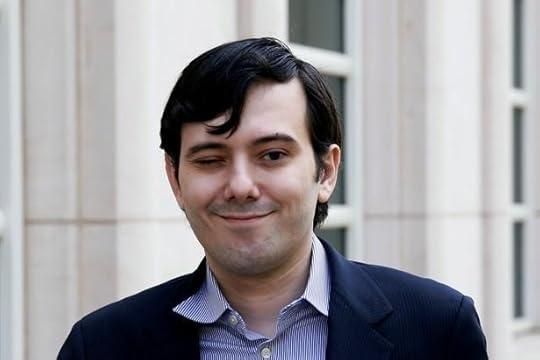
Martin Shkreli, the former drug company CEO and hedge fund operator colloquially known as “Pharma Bro,” pleaded not guilty Monday to a conspiracy charge, Reuters reported.
Both Shkreli and his lawyer were arrested last December and charged with scheming to steal money from Retrophin Inc., the pharmaceutical company Shkreli ran, and plotting to defraud investors. Investigators said he planned to use the stolen money to cover up losses in one of the hedge funds he operated, and that he misled potential investors by hiding his ownership of the company’s stock. Shkreli, 33, has pleaded not guilty to seven criminal counts of securities fraud and conspiracy since last year.
Shkreli’s rise to public contempt, criminal charges, and a reputation as “Pharma Bro” has been well-documented, as my colleague, Adam Chandler, recounted shortly after Shkreli’s arrest at the end of 2015:
In September, Shkreli raised the price of a life-saving drug from $13.50 to $750 and spent $2 million to buy the only copy of a Wu-Tang Clan album. Writing inThe Atlantic in September, James Hamblin called him “the face of unapologetic profiteering from the suffering of humans.”
Shkreli was arrested on Thursday on securities-fraud charges. Earlier this week, Daisy Hernández wrote in The Atlantic that Shkreli had a new gambit that would raise the price of a drug used to a treat Chagas, a disease mostly affecting Latin American immigrants. “Chagas is a disease of the poor,” said an adviser for Doctors Without Borders, “so it’s not a disease where people have access if prices are high.”
Schkreli is being tried in a federal district court in eastern New York. None of the criminal charges are connected to Shrekli’s medication price hike, but he has said in interviews he believes that is why investigators looked into him. A trial date has not been set.

Trump's Libya Quagmire

June 6 is the 72nd anniversary of D-Day. The general who oversaw that invasion, Dwight Eisenhower, was elected president in 1952—the last person in either party to win a nomination without holding elective office until Donald Trump. Now Trump is trying to follow in Ike’s footsteps by winning the presidency, too.
But whereas Eisenhower’s record of leading Americans into war vaulted him into the White House, Trump is trying to claim that he wouldn’t have led Americans to war in Libya and Iraq. The presumptive nominee skirmished with John Dickerson over whether or not he’d backed the U.S. intervention there during an appearance on Face the Nation on Sunday:
John Dickerson: Let me ask you about Libya. You have been highly critical of Libya and Hillary Clinton. You were also for military action to oust Qaddafi and military action to take care of the humanitarian situation in Libya. You supported that.
Donald Trump: When you say supported it, I supported Libya?
Dickerson: Yes, you supported the intervention in Libya.
Trump: I did? Where do you see that?
Dickerson then played video of Trump saying, “Now, we should go in. We should stop this guy, which would be very easy and very quick. We could do it surgically, stop him from doing it and save these lives.” Trump replied:
Trump: That’s a big difference from what we’re talking about.
Dickerson: But you were for intervention.
Trump tried to turn this into an argument about whether the aftermath of the intervention was handled well. (He also somewhat bafflingly boasted, “I made a lot of money with Qaddafi.”) You’d be hard-pressed to find people who would argue the aftermath was well-planned, but that’s not the question: Trump suggested that he had opposed the intervention from the start, and that turned out not to be true. The evidence shows he backed it. As Dickerson put it, “This is one of the things that confuses some people about your positions. You said you weren’t for intervention, but you were for intervention in Libya.”
It’s easy to see why Trump would want voters to believe he opposed the intervention in Libya. Not only did the maneuver turn out poorly—despite, or perhaps because, of Qaddafi’s quick toppling, the nation spiraled into civil war, with the violence killing four Americans in Benghazi in September 2012—but Hillary Clinton was a leading advocate for it, making it an alluring talking point to use against her. Needless to say, that’s a harder case to make if Trump backed the military action too.
Some conservatives—and some Bernie Sanders supporters, for that matter—have argued that there’s no real difference between Clinton and Trump. On many issues, that idea is tough to credit, but on foreign policy, Trump has actually tried to run to Clinton’s left. Yet he keeps getting snagged on evidence that he’s not that different.
For months, Trump claimed that he had opposed the Iraq war before it started, a decision that would have placed him a prescient minority—alongside Barack Obama, and notably apart from then-Senator Hillary Clinton, who voted to give the George W. Bush administration the right to pursue the war. Initially, he got away with that: Because he wasn’t a politician, there was no easily found record of his position at the time. But dogged work by BuzzFeed and others eventually turned up proof that Trump had voiced support for the invasion in 2002. (My colleague James Fallows memorably put it this way: “Trump. Is. Lying. About. Having. Publicly. Opposed. The. Iraq. War.”) To the frustration of BuzzFeed’s Andrew Kaczynski and his boss Ben Smith, Trump kept making the claim, and he kept getting away with it.
Now that Trump has cleared the field of Republicans, there’s more press attention (yes, it is possible) and scrutiny headed his way. Although few Republican presidential candidates were willing to full-throatedly back the Iraq war, they weren’t in a hurry to make support for it a major issue, given that the war was launched by a Republican president and backed by most of the GOP at the time. Although Dickerson didn’t ask about Iraq, other reporters have, and they’re pointing out when Trump isn’t telling the truth. James Fallows lays out how Trump tried to misrepresent his Iraq record to CNN’s Jake Tapper—and even made the easily debunked claim that he’d never been asked to prove that he was opposed to the war.
Conor Friedersdorf has argued that the insular echo-chamber of the American elite makes wars of choice—say, Iraq or Libya—more likely. Pressure to act creates a feedback loop that affects policymakers, while the costs are displaced to other people and other times. Part of Trump’s pitch to voters is that he stands apart from the Beltway elite, and is not beholden to the same mistaken conventional wisdom that binds its members. These two interventions, however, show how Clinton and Trump both came to the same conclusions about hitting Baghdad and Tripoli: The wars would be short, good for America, and good for the world. In both cases, they were wrong, and the major contrast between them is that Clinton was better versed in the specifics of both cases when she made her calls.
Eight years ago, Barack Obama’s early and vocal opposition to the war in Iraq helped him secure his party’s nomination, and to a lesser extent, the presidency. With Hillary Clinton poised to clinch the Democratic nomination on Tuesday, voters will be left choosing his replacement between two major-party candidates who backed both the war in Iraq and the intervention in Libya.

The Uncelebrated Local War Reporters
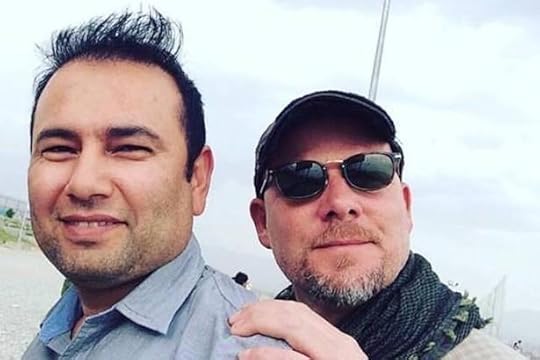
Updated on June 6 at 4:16 p.m. ET
David Gilkey, the NPR photographer, and Zabihullah Tamanna, a translator for the network, were killed Sunday in Afghanistan as the Afghan military convoy with which they were traveling came under fire from the Taliban.
Two other NPR journalists—Tom Bowman, the Pentagon correspondent, and Monica Evstatieva, a producer—were also part of the convoy but were unharmed.
Gilkey was one of the world’s most acclaimed photojournalists. (I worked with Gilkey at NPR, but never directly.) He was known for covering challenging stories: conflicts, diseases, and earthquakes, and he was awarded several times over for that work. As NPR’s Two-Way blog noted: “His images were haunting—amid the rubble, he found beauty; amid war, he found humanity.”
“He was a real sensitive soul,” Bowman told NPR on Monday, “and he was a real, complete artist.” But Gilkey, in a 2010 documentary, said his work (you can see some of it here) was about more than journalism. “It’s not just reporting, it’s not just taking pictures,” he said, “it’s do those products do the visuals, do the stories, do they change somebody’s mind enough to take action?”
Michael Oreskes, NPR’s senior vice president of news and editorial director, told me Gilkey’s goal was “to find visual ways to tell NPR-style stories.”
“One of the very important things that is true here is that we are deeply, deeply committed to international news coverage,” Oreskes said. “And David was one of the key people in our international enterprises. We have 17 bureaus, but in a way David was an 18th bureau.”
Oreskes saisd NPR had been in touch with Gilkey’s parents in Portland, Oregon, adding the network was working to make sure the photographer’s work is looked after.
Gilkey is the first Western journalist to be killed in Afghanistan since 2014, when Anja Niedringhaus, a German photographer for the Associated Press, was shot dead by an Afghan police officer who walked up to her car and opened fire. Overall, 24 journalists and a media worker have been killed in Afghanistan since the U.S.-led invasion of the country following the attacks of September 11, 2001, according to data maintained by the Committee to Protect Journalists. (The numbers do not include Gilkey and Tamanna.) The invasion resulted in the ousting of the Taliban and the establishment of a democratically elected government, but 15 years later Afghanistan is still dangerous and the Taliban remain a potent force. In Afghanistan, CPJ notes, three-quarters of those killed since 2001 are international journalists.
That number is an anomaly from the rest of the world, where the overwhelming majority of journalists killed are, like Tamanna, locals. Men and women who, as my colleague Kathy Gilsinan wrote in Columbia Journalism Review in 2013, “did not leave comfortable lives in the West to record someone else’s tragedies; they wrote about, filmed, and photographed their own.” Indeed, while Tamanna was an interpreter for NPR, he also worked as a reporter and photographer for Anadolu, the state-run Turkish news agency, and was tweeting from the field as recently as two days ago. Bowman, the NPR correspondent, described the 38-year-old father of three young children as a “real steady guy. A very nice man. Unflappable.”
“He would help us more than you can imagine: getting interviews and going places,” he said. “Just a very kind, kind man.”
Graham Smith, an NPR producer who has covered Afghanistan, Iraq, and other war zones several times for the network, noted in 2009, that Western news organizations rely heavily on men like Tamanna—local translators and journalists who often do much of the work themselves. As Smith pointed out:
NPR reporters don't do all the work you think they do, especially in war zones. The same could be said of reporters for The New York Times, The Washington Post and the TV networks — we rely, and rely heavily, on people called “fixers.”
They are locals with good English who drive us around, interpret for us, set up interviews and sometimes even do the interviews. They assume an immense amount of risk in exchange for little recognition, but a decent paycheck.
Indeed, until 2001, Tamanna was training as a pediatrician, but began working with Western journalists after the U.S.-led invasion. He abandoned his medical studies to continue working as a journalist so he could chronicle what was happening to his country. At night he took “classes for a degree in law and political science,” Anadolu reported. The Turkish news agency described him as a regular fixture on its English news team, covering major stories such as the Afghan presidential election, the death of Mullah Omar, the Taliban’s founder, and ISIS’s rise in Afghanistan.
Oreskes, the NPR executive, said the network regarded Tamanna as a colleague and staff member since he was hired by the network last year. And, he said, the network was in touch with Tamanna’s family and would make sure they are looked after.
“If you are one of the fewer and fewer organizations that are truly committed to international coverage, people like Zabi are essential,” Oreskes said. “In truth, it’s inaccurate to describe him as a translator or just a fixer. He was a quite distinguished journalist. He had a wonderful eye for photography ... and he was a terrific reporter.”
Here’s more about Tamanna from Anadolu’s Kaamil Ahmed, who worked closely with the slain reporter:
He … wrote about efforts to empower women economically, communal solutions to wedding expenses and the long, dangerous journeys young Afghans risked to get to Europe.
Political tensions and two of the worst years of Taliban violence since 2001 meant Zabihullah usually wrote several stories a day. On one unusual day when he had not, he e-mailed: “Nothing special so far. Sometimes no news is good news.”

No Charges For Parents of the Boy Who Climbed Into the Gorilla Enclosure

The parents of the boy who climbed into a gorilla enclosure at the Cincinnati Zoo last month won’t be charged with any crime, Ohio’s Hamilton County prosecutor’s office said Monday.
Zoo personnel shot and killed the western lowland gorilla, named Harambe, after the 3-year-old boy crawled over the railing and fell into the animal’s cage. The animal’s killing prompted an uproar and criticism against the child’s parents, who some blamed for the gorilla’s death because the couple had apparently lost track of their son.
In a statement, the head of the Hamilton County Prosecuting Attorney’s Office, Joseph T. Deters, said:
“This was a tragic accident and a terrible loss for the zoo of their beloved gorilla. However, the zoo did the right thing when they took immediate action to save the life of a young child. A gorilla is a wild animal and, by definition, dangerous and unpredictable.
Many people on social media have condemned the mother for not watching her child carefully enough at the zoo. None of the witnesses interviewed described the mother as anything but attentive to her children. Our information is that the mother turned away for a few seconds to attend to another one of her young children and that is when the 3-year-old was able to climb into the gorilla enclosure. Any parent who is honest with himself or herself would have to understand how this could happen to even the most attentive parent.
I am very sorry about the loss of this gorilla but nothing about this situation rises to the level of a criminal charge.”
Much of what happened was caught on video. And after the boy fell into the enclosure, Harambe stood over him, as if protecting the child from the people screaming above. But later the gorilla pulled the boy across the water. The zoo director decided not to tranquilize the gorilla because the sedative takes some time to work, and it might have endangered the boy. The boy was taken to a nearby hospital and didn’t suffer any serious injuries.
Deters said investigators made four trips to the Cincinnati Zoo, interviewed four witnesses, reviewed cell-phone footage, and questioned the boy’s mother. One witness at the zoo told CNN the mother’s attention “was drawn away for seconds, maybe a minute, and then he was up and in before you knew it.”
The gorilla exhibit was closed after the incident, but is scheduled to open Tuesday with new upgrades to the enclosure, which include a higher barrier, and rope netting.

Atlantic Monthly Contributors's Blog
- Atlantic Monthly Contributors's profile
- 1 follower



